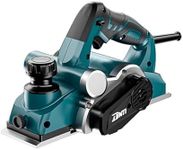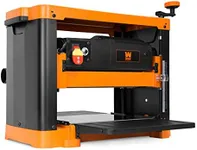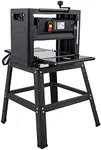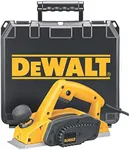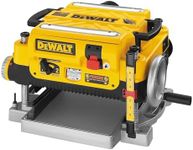Buying Guide for the Best Benchtop Wood Planers
Choosing a benchtop wood planer can make a big difference in the quality and efficiency of your woodworking projects. The right planer will help you achieve smooth, even boards and save you time on sanding and finishing. When shopping for a planer, it's important to understand the key features and how they relate to your specific needs, such as the types of wood you work with, the size of your projects, and how often you plan to use the tool.Cutting WidthCutting width refers to the maximum width of the board that the planer can handle in a single pass. This is important because it determines the size of material you can work with. Planers typically come in widths ranging from about 12 to 13 inches for benchtop models. If you mostly work with narrow boards, a smaller width is sufficient, but if you plan to plane wider boards or want more flexibility, look for a planer with a larger cutting width.
Cutting DepthCutting depth is the maximum amount of material the planer can remove in one pass. This affects how quickly you can reduce the thickness of your boards. Planers usually offer a maximum depth of cut between 1/16 inch and 1/8 inch. For light smoothing, a shallow depth is fine, but for removing a lot of material quickly, a deeper cut is helpful. However, deeper cuts can strain the machine and may lead to rougher finishes, so consider your typical project needs.
Motor PowerMotor power, usually measured in amps for benchtop planers, determines how easily the machine can handle tough or wide boards. More powerful motors (15 amps or higher) can handle harder woods and larger jobs without bogging down, while lower-powered motors are suitable for occasional use or softer woods. If you plan to use your planer frequently or with hardwoods, a higher-powered motor is a better choice.
Feed RateFeed rate is how quickly the board moves through the planer, usually measured in feet per minute (FPM). A faster feed rate means you can process boards more quickly, but it may result in a rougher finish. Some planers offer variable feed rates, allowing you to choose between speed and smoothness. If you value a fine finish, look for a slower feed rate option; if you need to process a lot of material quickly, a higher feed rate is useful.
Number of BladesThe number of blades in the cutter head affects the smoothness of the finish and the speed of material removal. Most benchtop planers have two or three blades. More blades generally mean a smoother finish and less tear-out, especially on figured or difficult woods. If you want the best surface quality, choose a planer with more blades, but for basic tasks, two blades may be sufficient.
Dust CollectionDust collection refers to the planer's ability to manage the chips and dust produced during operation. Good dust collection keeps your workspace cleaner and helps the planer run more efficiently. Some planers have built-in dust ports that can be connected to a shop vacuum or dust collector. If you work indoors or want to minimize cleanup, look for a planer with effective dust collection features.
PortabilityPortability is about how easy it is to move and store the planer. Benchtop planers are designed to be more portable than larger, stationary models, but they still vary in weight and size. If you need to move your planer between job sites or store it away when not in use, consider a lighter, more compact model. If it will stay in one place, portability is less of a concern.
